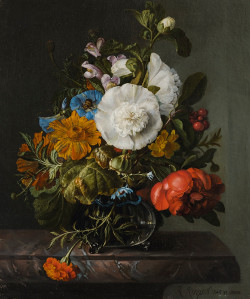data from:
WIKIPEDIA
In the seventeenth century, the newly established Dutch Republic emerged as Europe's epicenter of prosperity, leading the way in trade, science, and art. This period marked a significant shift in artistic dominance from the traditional centers in the southern Flanders to the northern Netherlandish provinces, which constituted the new state.
The turbulent times, characterized by the upheavals of war and substantial population movements, coupled with a decisive break from monarchist and Catholic cultural traditions, catalyzed a profound transformation in Dutch art. This era saw a notable decline in the painting of religious themes. However, it simultaneously gave rise to a burgeoning market for secular subjects, accommodating a diverse array of artistic expressions and themes.
This period of reinvention and adaptation propelled Dutch art to new heights, creating a rich tapestry of secular works that reflected the changing times and the dynamic spirit of the Dutch Republic.

Rachel Ruysch
1745
Oil on canvas, 38.2 x 32.2 cm.
Private collection
Although Dutch painting of the Golden Age is included in the general European period of Baroque painting, and often shows many of its characteristics, most lacks the idealization and love of splendour typical of much Baroque work, including that of neighbouring Flanders. Most work, including that for which the period is best known, reflects the traditions of detailed realism inherited from Early Netherlandish painting.
A distinctive feature of the period is the proliferation of distinct genres of paintings, with the majority of artists producing the bulk of their work within one of these. The full development of this specialization is seen from the late 1620s, and the period from then until the French invasion of 1672 is the core of Golden Age painting. Artists would spend most of their careers painting only portraits, genre scenes, landscapes, seascapes and ships, or still lifes, and often a particular sub-type within these categories. Many of these types of subject were new in Western painting, and the way the Dutch painted them in this period was decisive for their future development.
The following timeline presents Dutch painters of the seventeenth century. By scrolling your mouse over the name of each artist, a tooltip pop-up will provide the artist's full name, the date and place of birth as well as a thumbnail example of his work. Click on the name of the painter to access further information about his life and art at Wikpedia